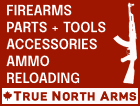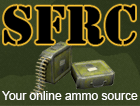https://www.ssusa.org/articles/2021/...ing-protection
Everything You Need To Know About Modern Hearing Protection
by John Parker - Friday, March 12, 2021
In the competitive shooting world, hearing protection and hearing loss are among the most widely misunderstood topics. And with product data sheets filled with confusing noise reduction ratings along with marketing jargon, etc., it’s no wonder why. Although the marketplace has been flooded with high-tech earpro options that are becoming more affordable every year, savvy shoppers know how to buy exactly what they need for their particular shooting situations. Here’s a primer on what you should be looking for when shopping for modern hearing protection, along with a few recommendations.
Tetra AlphaShield
These Tetra AlphaShields use a digital signal processor to significantly enhance hearing protection.
All About NRR
When discussing hearing protection, the metric familiar to most of us is the noise reduction rating (NRR), which has devolved from well-intentioned origins into a term that’s misunderstood at best by the average person. This is epitomized in the “bigger is better” approach, where buyers are sold on earpro with the highest NRR number, which can sometimes be misleading. In fact, the NRR is simply a single-number method that manufacturers are required to print on the hearing protection packaging by the Environmental Protection Agency. The EPA was prompted by the National Institute for Occupational Safety and Health’s 1975 publication detailing a laboratory method developed for evaluating the attenuation of hearing protection devices. But over time, the NRR has developed problems.
The NRR was created to monitor hazardous noise in industrial settings. Since most industrial work settings—such as a typical factory—are highly variable, the NRR formula was designed to address a broad frequency spectrum of noise that could emanate from industrial facilities (125 Hz – 8000 Hz). Essentially, the NRR functions as a catch-all metric for any work environment with high noise levels.
“From an acoustical science standpoint, the NRR is a poor measurement tool for an impulse noise like a gun blast, that is both a very narrow band of energy and extremely short duration. It is equivalent to measuring an object in millimeters with a wooden yardstick,” said Dr. Bill Dickinson, AuD, an audiologist for the past 30 years and the co-founder of Tetra Hearing.
Noise Reduction Rating label
Given in decibels, the NRR for hearing protection products are based on lab tests that estimate the passive noise reduction of the hearing protection.
Many consumers see it as the sole benchmark for determining hearing protection attenuation levels, but the NRR often provides an optimistic appraisal of the actual attenuation of a product. “The NRR is a voluntarily reported and unregulated measurement,” added Dr. Dickinson. “I believe it has become an overused marketing tool that is poorly understood by the shooting public and misrepresents safe and effective ear protection from gunfire.”
To be clear, we don’t want to completely dismiss the NRR. However, it’s important for shooters to know what the number on the packaging actually represents. The original purpose of the NRR was to monitor long-term exposure of harmful noise over time to workers. A gun blast includes energy in a narrow band of frequencies, yet the NRR is designed for a wide sample spectrum. As such, the NRR nearly always botches the true attenuation for a gun blast, because the attenuation levels of so many frequencies outside the range of the gunshot will influence the final NRR. Of paramount importance for hearing protection is the amount of attenuation at specific frequencies being sufficient to produce a safe listening level. For example, with an impulse noise like a gun blast, as long as the hearing protection reduces the blast intensity to below 140 decibels SPL-A, the wearer will be safe.
“Once sound is at a safe level, there is no such thing as ‘more safe,’” said Dr. Dickinson.
Active Hearing Protection and DSP
At some point, most serious competitive shooters end up purchasing active hearing protection, because it makes a huge difference during a day at the range training or at a match. A digital signal processor significantly increases the overall value of hearing protection. By controlling sensitivity, earpro equipped with active hearing protection can determine how loud a sound has to get before they “shut off” outside noise. This is possible thanks to miniaturized circuits that can handle digital signal processing’s heavy computational load, along with omni-directional, noise-canceling microphones. By aiding competitive shooters in hearing range commands or spotters calling out wind data, affordable DSPs have literally changed the hearing protection game.
A typical digital signal processing setup consists of a DSP chip (the “brain” where calculations and algorithms are performed), memory and programming. Unlike passive protection, a good DSP will suppress noise without blocking speech signals. DSPs are used everywhere audio is involved, from speech processing to voice recognition. Even your smartphone has a DSP for speech compression and transmission.
Tetra Ear Plugs
Tetra AlphaShields ($699).
One compact in-the-ear option for active hearing protection is Tetra Hearing’s AlphaShield ($699, tetrahearing.com). These entry-level, universal-fit earplugs borrow some of the latest tech from hearing aids to help shooters preserve their hearing on the firing line, by using a sophisticated 12-channel DSP to block high decibel levels while still allowing for normal conversation. The AlphaShields are customized to your needs; after taking a 5-minute online hearing test, Tetra will program your new earplugs to your personal hearing profile. Dr. Dickinson elaborated on the AlphaShield’s programming.
“We want to create a normal listening environment. With the premium DSP chip, it is possible to create algorithms that adjust the compression parameters to improve the attenuation levels for the user. This is done by highly manipulating the attack time and release time of the compression system. And with carefully constructed algorithms, you can absolutely control sound attenuation electronically in the presence of multiple, ongoing gunshots, such as on a hot firing range, duck blind or upland hunt, etc.”
E.A.R. Digital Plus
E.A.R. Digital Plus earplugs ($2,200).
Another option is the Digital Plus multi-memory earplug set from E.A.R. Inc. ($2,200, earinc.com), which provide increased fidelity for those experiencing moderate to severe hearing loss. The circuit board is programmable for fine-tuning pitch and tone. Environmental sounds will have more clarity, valuable if you are a hunter in addition to a competitive shooter. Music and audio upgrades, two-way communication and Bluetooth wireless are available options, plus each unit is lanyard ready. Each Digital Plus is made-to-order for the purchaser to get a custom fit and the electronics come with a three-year warranty.
On the other end of the spectrum there are earmuffs. Electronic earmuff-style hearing protection often combine a DSP for active hearing protection with other bells and whistles, such as Bluetooth connectivity for playing music or podcasts, along with communication capabilities in some cases. Regardless of the optional frills, an over-the-ear headset employing active hearing protection is a welcome choice.
Safariland Liberator HP 2.0
Safariland Liberator HP 2.0 headset ($300).
One new electronic earmuff option from Safariland is the Liberator HP 2.0 headset ($300, safariland.com), which has a multi-mode, dual processor for blocking dangerous impulse noise and enhancing nearby speech and audio. With up to 29 dBa of noise attenuation, the headset compresses harmful sound levels to approximately 82 dBa. Safariland also mentions the Liberator HP 2.0 headset cut sound levels up to 33 decibels. (Note: In the dBa system, the decibel values of sounds at low frequencies are reduced, compared with unweighted decibels, where no correction is made for audio frequency.)
Traditional Technology
Even with the proliferation of advanced electronics in different types of hearing protection, the reliable foam earplug remains a great option as a backup in your range bag, or even as your daily driver at the range. While foam earplugs will distort conversation-level sounds, they will decrease loud noises such as gunshots by as much as 20 decibels.
Axil foam earplugs
Axil foam plugs ($1).
You can buy foamies in large-count containers from Amazon and other online outlets, but one of my favorites is Axil’s bright green foam plugs ($1, goaxil.com). Not only do they boast 31 NRR hearing protection; they are latex-free, instead made from medical-grade, non-allergenic polyurethane foam. Plus, they are sold individually in thick, foil-lined packaging. This packaging is handy as a container, because these foam plugs are washable and I have reused them several times after a quick cleaning.
Safariland Foam Impulse hearing protection
Safariland Foam Impulse earbuds ($15).
Another traditional option is Safariland’s Foam Impulse ($15, safariland.com), which are earbuds that use interesting hybrid foam technology to block harmful noise while still allowing conversation and other ambient sounds in. To achieve this without the use of electronics, Safariland uses its Impulse sound filters. There are two noise reduction options: Impulse mode, with 38-decibel peak impulse reduction and 13-decibel continuous reduction; and Full-Block mode with 20 decibels of continuous noise reduction.
So if you want to ensure that you can continue functioning as a member of society without asking people to speak up all the time, invest in quality hearing protection. Your ears will thank you.
|
















 Reply With Quote
Reply With Quote



 " - Grumpy Wolverine.
" - Grumpy Wolverine.




